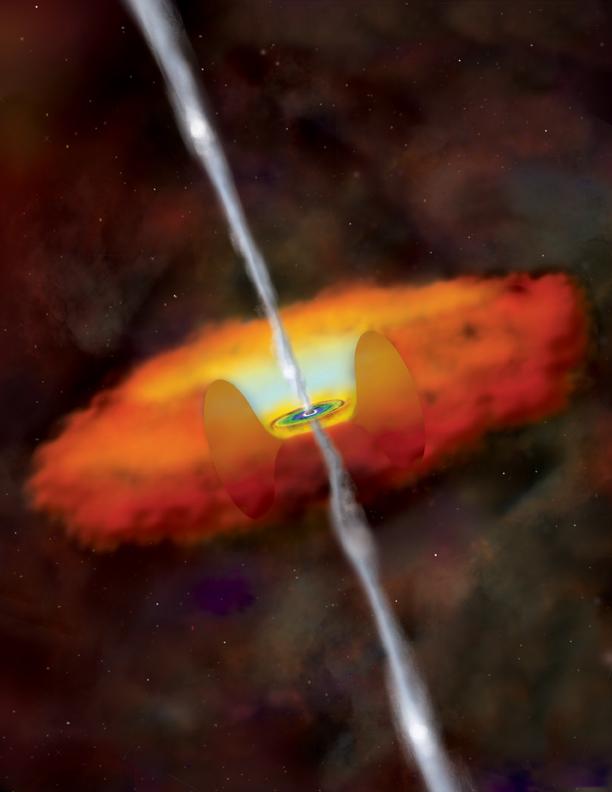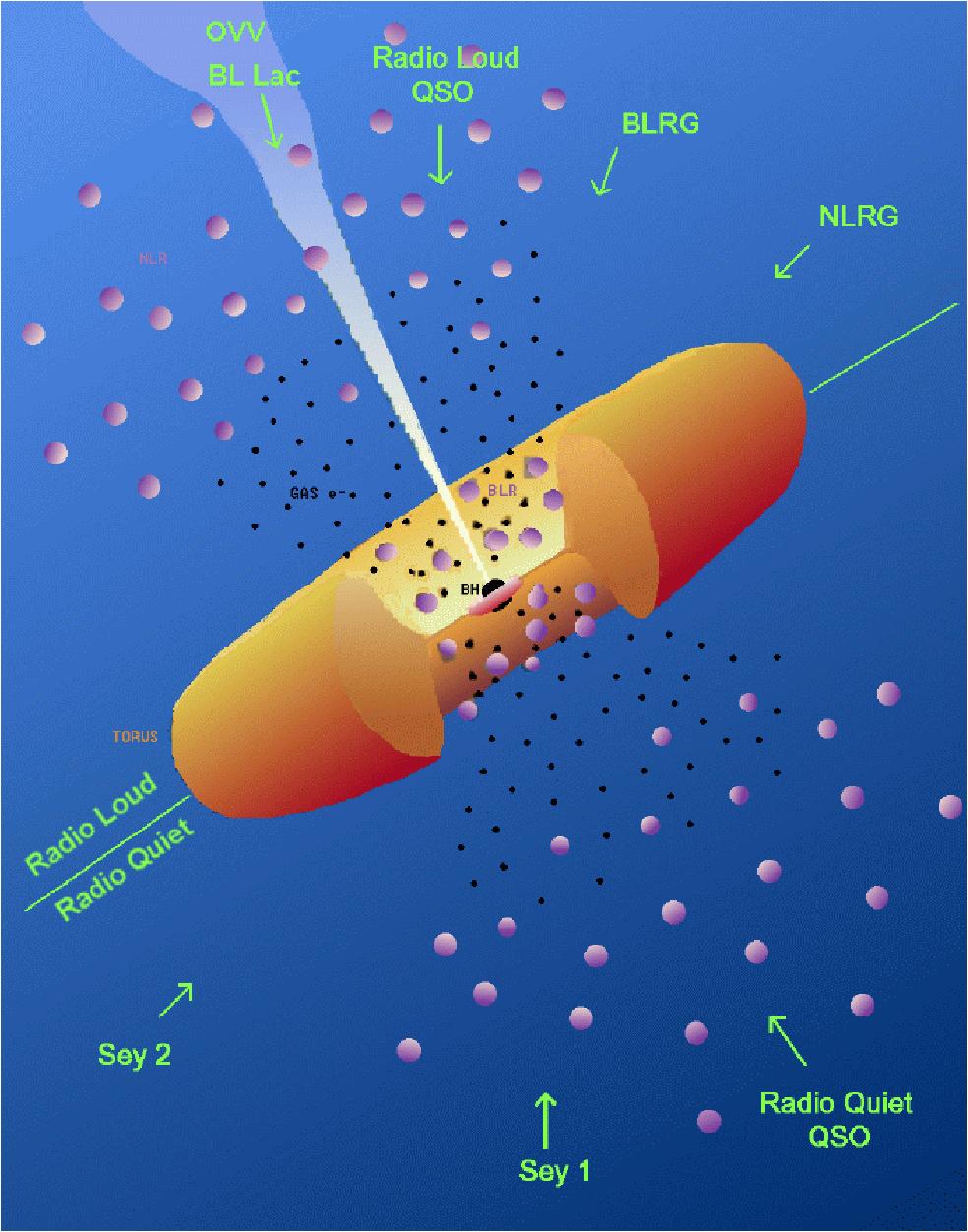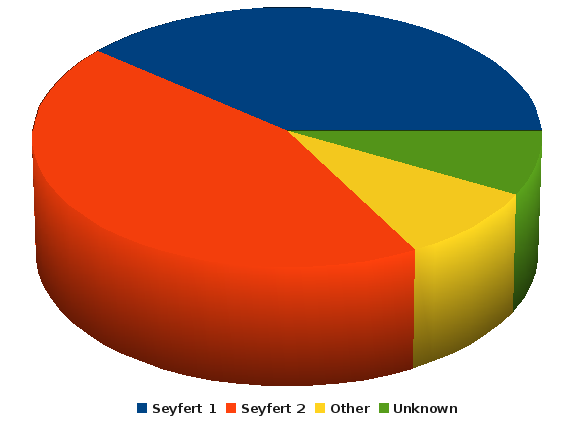Active Galactic Nuclei (AGN)
 |
The successive IBIS surveys have shown that about 40% of the sources detected in the gamma-ray sky are AGN. The number of detected AGN really escalated from the first to the second survey, with INTEGRAL spending much more of its observing time looking out of the obscuring dust in the plane of our Galaxy.
A catalogue of AGN observed by IBIS in the 20-100 keV energy range Bassani et al. (2006) identifies 62 AGN, of which most are Seyfert galaxies and a small fraction are blazars. Many of these sources show significant absorption, highlighting the sensitivity of IBIS to sources previously obscured by local or intergalactic absorption.
From the above catalogue, most Seyfert galaxies are found to have redshifts around 0.021 which places them at distances between 80 and 90 Mpc. The furthest AGN detected by INTEGRAL, a quasar called IGR J22517+2218, is at a redshift of 3.7. Such distant systems allow us to study the conditions of galaxy formation, as looking into the distant universe is equivalent to looking back in time. (The light from IGR J22517+2218 has taken approximately 50 million years to reach us.)
It is thought that the different properties of AGN can be attributed to differences in the observer's viewing angle, i.e. looking at an AGN through the dusty torus, it can look very different from viewing an AGN along the axis of its jet. This schematic diagram below illustrates these differences. The pie chart below shows the type and number of AGN as detected by INTEGRAL in the 3rd catalogue (Bird et al. 2007). The group labeled "Other" comprises the quasars (QSO), blazars, (BL Lacs) and broad-line radio galaxies (BLRG)
 |
 |